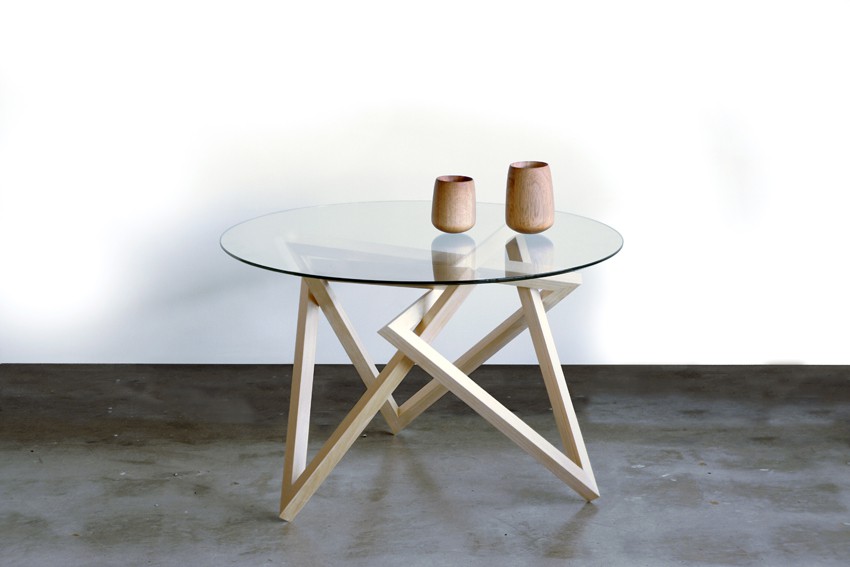Liam Mugavin: Simply Does It

>For Liam Mugavin, a love of Japanese design underpins a striking furniture and lighting portfolio that is beginning to receive national attention.
For Liam Mugavin, a love of Japanese design underpins a striking furniture and lighting portfolio that is beginning to receive national attention. It’s hard to believe that Liam Mugavin only established his practice last year. The Adelaide-based furniture and lighting designer has already received a number of accolades, including a place in the 2014 Temple & Webster Emerging Designer Awards shortlist. He may not have taken out the highly regarded title, but even being in the running has afforded him the type of recognition that will come to serve his practice well. Mugavin’s current portfolio features a number of key pieces that are bold and dynamic in their geometric form. Clean lines, angles and shapes characterise each work, making for a clever interpretation of traditional design ideals. Not surprisingly, he draws most of his inspiration from Japan, having lived there following his graduation in 2008 from the University of South Australia’s Bachelor of Design (Product Innovation). “I lived in Japan for four years, so I had time to absorb the country’s aesthetics and philosophies, which have really influenced my tendency towards creating simple design,” reflects Mugavin. “I use a lot of lines in my work and this is something that’s common in Japanese architecture. Most of the homes traditionally found in Kyoto, for example, feature facades of a detailed horizontal and vertical framework.” But perhaps Mugavin’s biggest influence is the work of contemporary Japanese design powerhouse Nendo, founded in 2002 by Oki Sato. “I particularly like how his work tells a story and so every part of his design is there for a reason,” explains Mugavin. “If something doesn’t serve the narrative it’s not included and I really appreciate that.” Such rationalisation of form is evident in Mugavin’s own Tangle table from which all superfluous detail has been judiciously removed. The table’s origins are rather less formal than the outcome, however, and this reveals the appealingly organic nature of Mugavin’s process. “I was playing around with the geometric forms that are in my logo and the design just evolved in the workshop,” he says. “I wasn’t even trying to design a table, but that’s how it ended up.” Mugavin has also taken this design one step further and developed it into a sphere light, which works effectively well as either a pendant or floor lamp. As a second-year Associate in JamFactory’s furniture studio, Mugavin is well placed to continue refining his craft. His priority is to develop a thorough knowledge of materials and a strong understanding of artisanal skills and techniques. Working under the leadership and guidance of Jon Goulder means he is receiving the very best training available in the country. But this isn’t to say that emerging furniture designers in Adelaide don’t face the same challenges as their interstate peers. “I guess it’s pretty tough because we’re working in a niche market and there’s not always a lot of work out there,” reflects Mugavin. “So getting your name known to help generate commissions is really important.” If this is a strategy on Mugavin’s part, then his plan is already in action, aided by a personal philosophy that is unfailing: “It’s just about persistence and eventually I’ll get there.” liammugavin.com